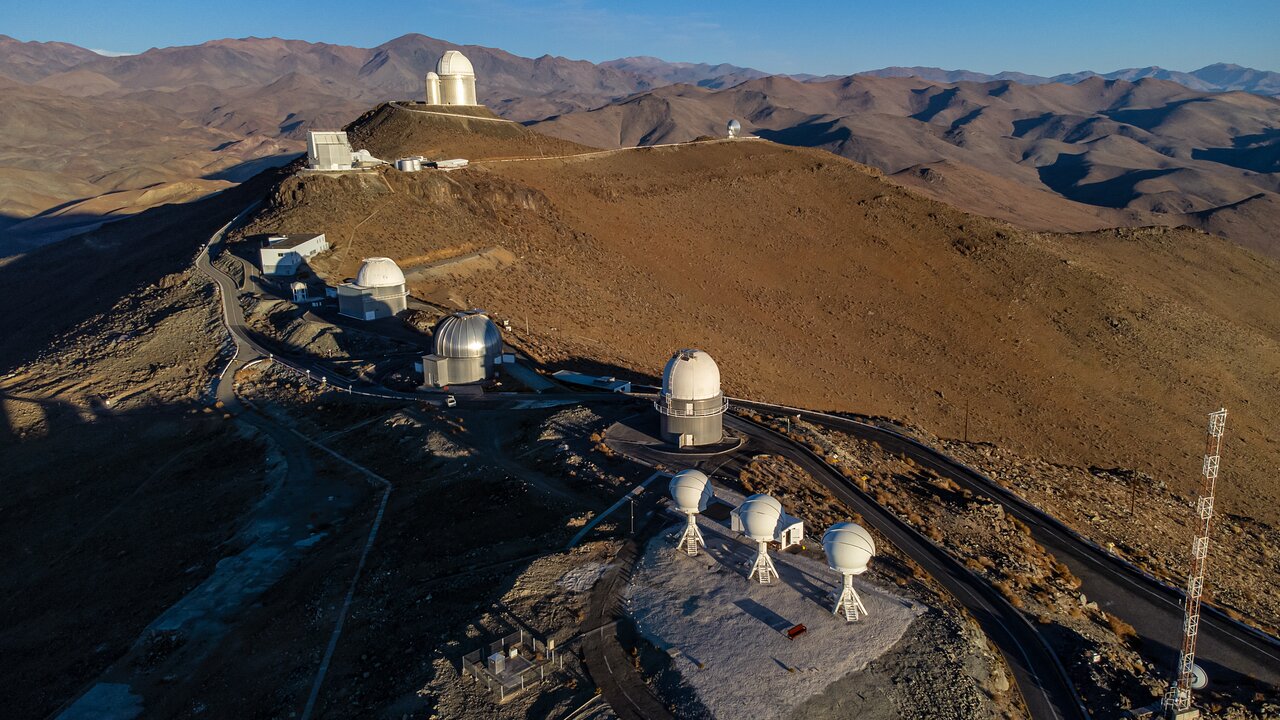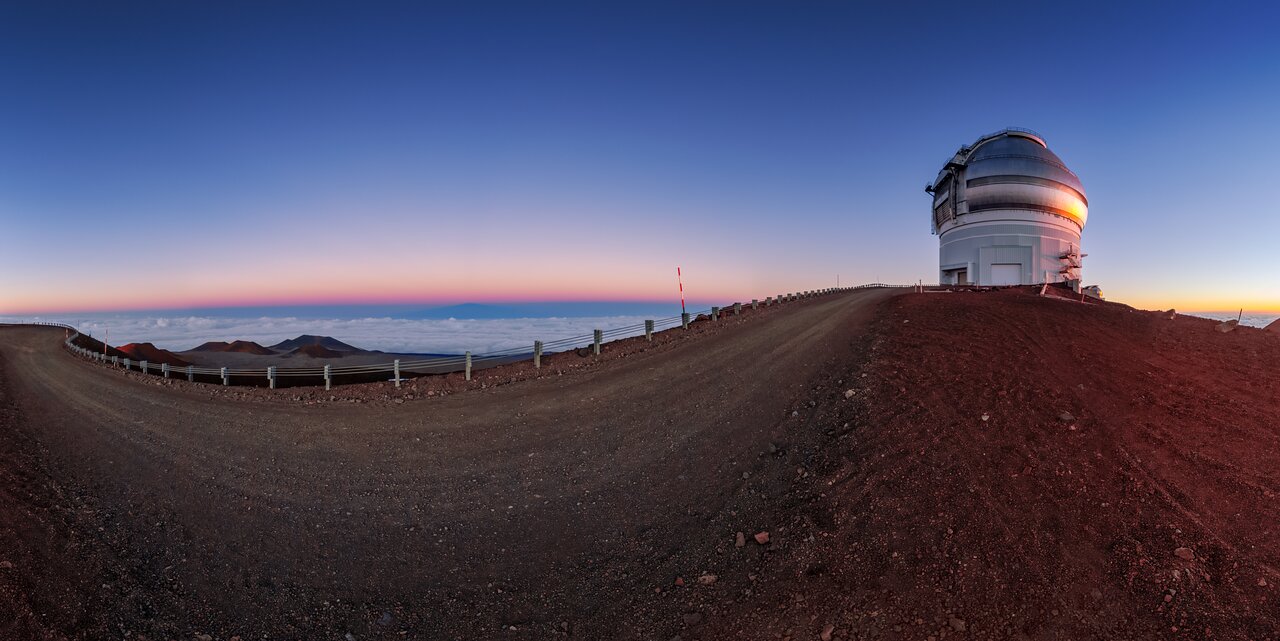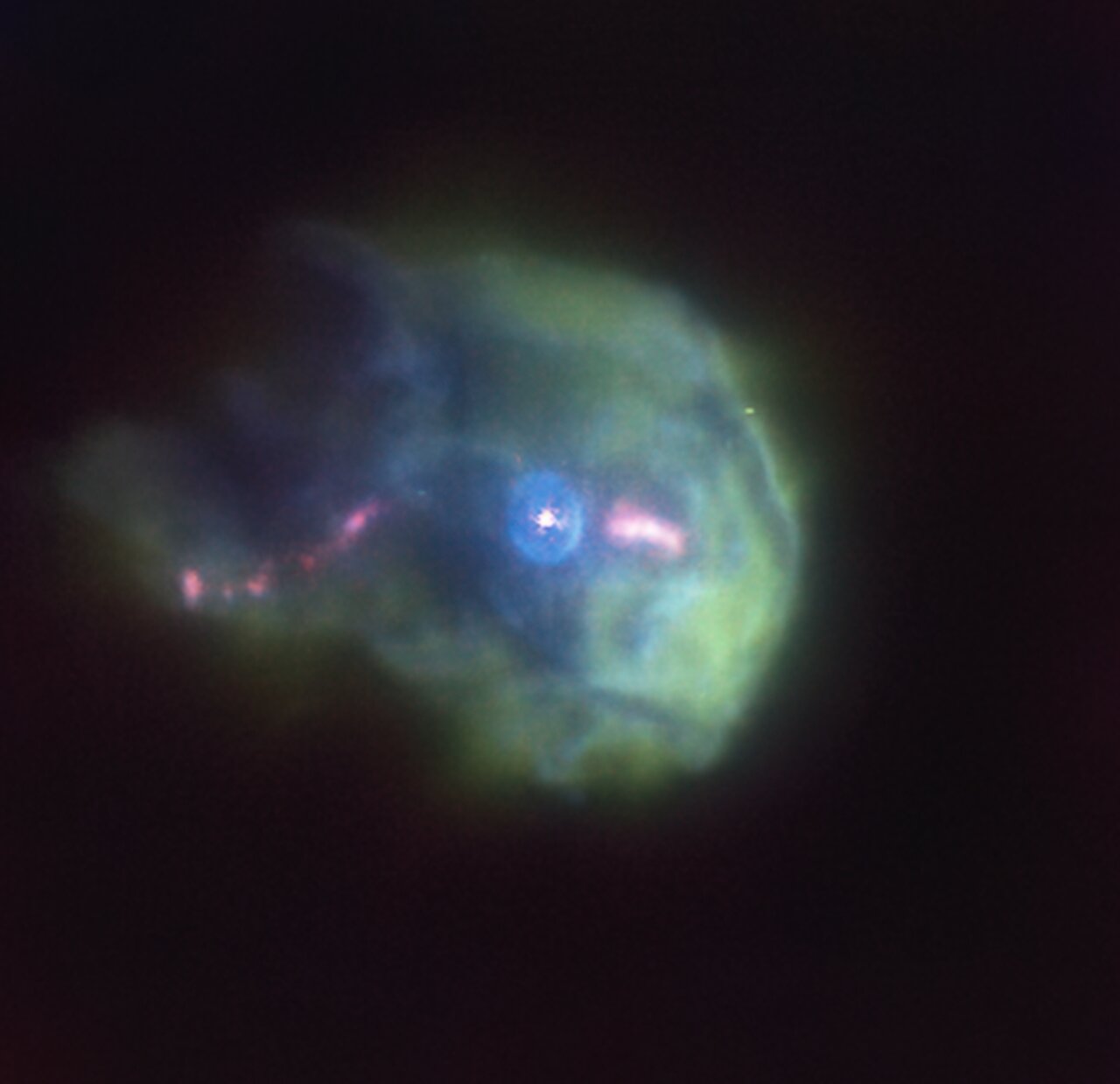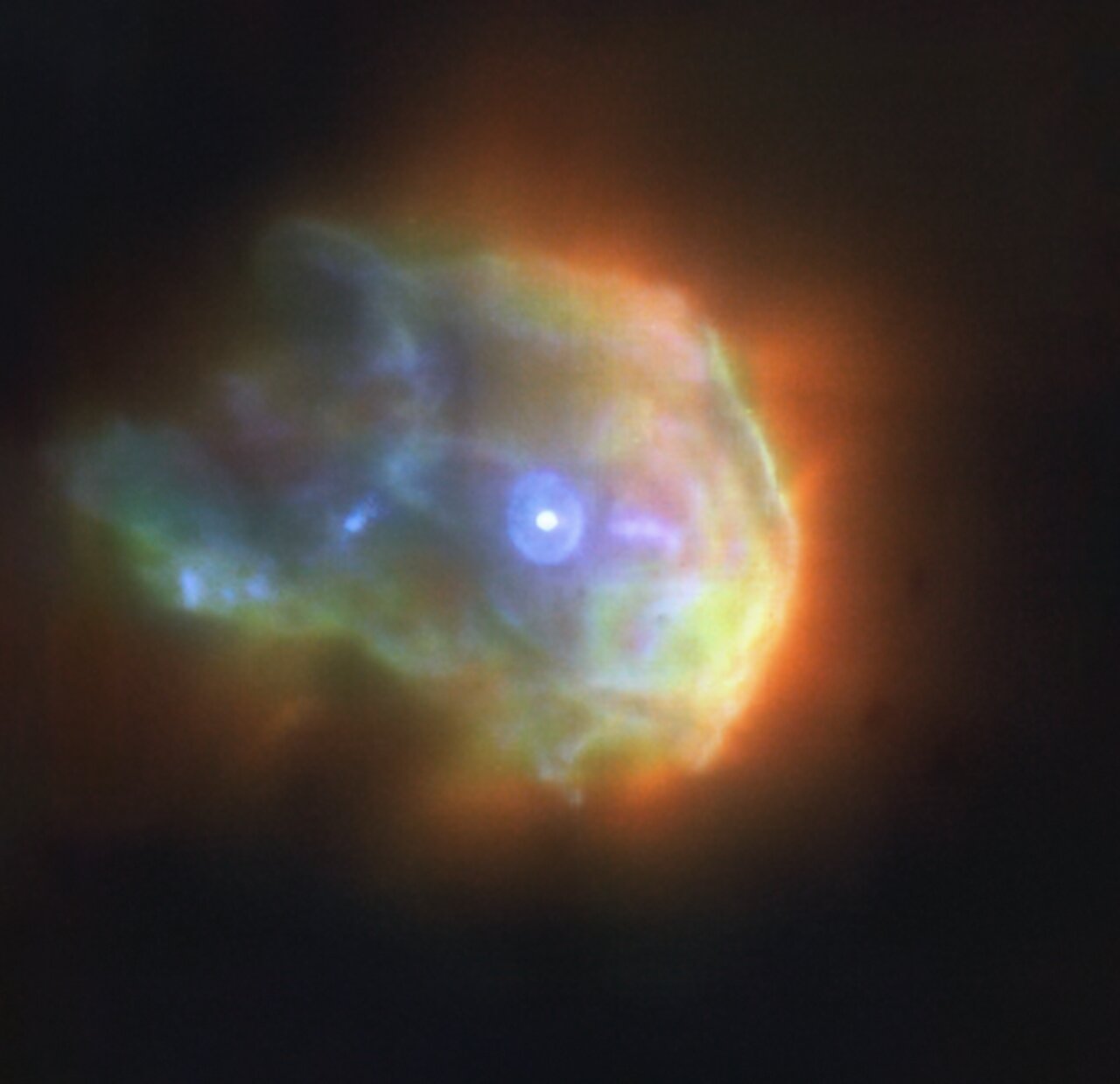Page 1 of 2
Found Images: 2023 April
Posted: Sun Apr 02, 2023 2:20 am
by bystander
Have you seen a great image or video somewhere that you think would make a great APOD? Nominate it for APOD! Please post as much information here as you have about the image/video with a link to any source(s) for it you know of here, and the editors will take a look.
When posting the image itself, please do not post anything larger than a thumbnail here; please honor the copyright holder's copyright.
Please keep hotlinked images under 500K.
Thank you!
<< Previously
Re: Found Images: 2023 April
Posted: Sun Apr 02, 2023 10:55 pm
by starsurfer
NGC 1313
https://www.chart32.de/index.php/component/k2/item/148
Copyright: CHART32
Processing: Johannes Schedler
Re: Found Images: 2023 April
Posted: Sun Apr 02, 2023 10:59 pm
by starsurfer
Sandqvist 172
http://www.atacama-photographic-observa ... php?id=137
Copyright: Thierry Demange, Richard Galli and Thomas Petit
ESO: Sunset at La Silla
Posted: Mon Apr 03, 2023 12:57 pm
by bystander
Sunset at La Silla
ESO Picture of the Week | 2023 Apr 03
From the long eastward shadows of the telescopes in this Picture of the Week we can see that it’s almost the beginning of a long night shift of stargazing for the telescopes at ESO’s
La Silla Observatory. In the foreground of this picture is the
BlackGEM array, designed to hunt for the visible light of
gravitational wave sources. If you then follow the road up to the summit of La Silla you will pass several ESO telescopes including the
1-metre Schmidt telescope and the
New Technology Telescope, until you finally reach the
3.6-metre telescope at the top, home to the
HARPS planet hunter.
La Silla mountain is ideally situated for an observatory as its isolated location means there is very little light pollution. It is also in Chile’s extremely dry Atacama desert at an altitude of 2400 metres, meaning there’s hardly ever a cloud in the sky and almost every day boasts clear blue skies as can be seen in this picture.
ESA: Aftermath of a Cosmic Explosion
Posted: Mon Apr 03, 2023 1:14 pm
by bystander
Aftermath of a Cosmic Explosion
ESA Hubble Picture of the Week | 2023 Apr 03
Image Credit: ESA/Hubble & NASA, C. Kilpatrick
The somewhat amorphous
spiral galaxy UGC 2890 appears side-on in this image from the NASA/ESA Hubble Space Telescope, with bright foreground
stars studding the image. This galaxy lies around 30 million light-years away in the constellation
Camelopardalis.
In 2009 astronomers spotted a catastrophically powerful
supernova explosion in UGC 2890. While the supernova itself has long since faded from view, Hubble recently took a break from its regular observing schedule to inspect the aftermath of this explosive event.
A
Type II supernova is a spectacularly energetic explosion that marks the violent death of a massive star. As it runs out of the elements necessary to fuel nuclear fusion, the core of a massive star flickers out and stops producing energy. With nothing to support the crushing force of gravity, the core of the star shrinks and then suddenly implodes, leaving the star’s outer layers to collapse inwards and rebound out into space as a supernova explosion.
This observation is one of many Hubble investigations of Type II supernovae. Astronomers turned to Hubble’s
Advanced Camera for Surveys to explore the surroundings of Type II supernovae in the hope of discovering the ages and masses of stars in the neighbourhood. This will reveal insights into the types of stars that eventually create Type II supernovae, as well as revealing any stellar survivors of colossal supernova explosions.
Re: Found Images: 2023 April
Posted: Mon Apr 03, 2023 10:22 pm
by starsurfer
Pa J0634.4+3327
https://www.starscapeimaging.com/PAJ063 ... uriga.html
Copyright: Jon Talbot
Processing: Marcel Drechsler
Re: Found Images: 2023 April
Posted: Mon Apr 03, 2023 10:28 pm
by starsurfer
M37 and IPHASX J055226.2+323724
https://www.imagingdeepspace.com/iphasx ... 23724.html
Copyright: Peter Goodhew and Sven Eklund
Processing: Marcel Drechsler
Re: Found Images: 2023 April
Posted: Mon Apr 03, 2023 10:34 pm
by starsurfer
Sh2-240, G179.0+2.6 and M37
https://www.astrobin.com/j0p1vg/
Copyright: Rolf Dietrich
The emission nebula north of Sh2-240 is Du 77 while Sh2-242 is the small HII region below and to the left. The planetary nebula associated with M37 can faintly be seen in the full resolution image.
Re: Found Images: 2023 April
Posted: Mon Apr 03, 2023 10:39 pm
by starsurfer
Re: Found Images: 2023 April
Posted: Mon Apr 03, 2023 10:44 pm
by starsurfer
Cat's Paw Nebula (NGC 6334)
https://www.pbase.com/gailmarc/image/165743164
Copyright: Marcus Davies
Re: Found Images: 2023 April
Posted: Sat Apr 08, 2023 9:58 pm
by starsurfer
NGC 7497 and MBM 54
http://www.capella-observatory.com/Imag ... GC7497.htm
Copyright: Josef Pöpsel, Frank Sackenheim and Stefan Binnewies
Re: Found Images: 2023 April
Posted: Sat Apr 08, 2023 10:00 pm
by starsurfer
Re: Found Images: 2023 April
Posted: Sun Apr 09, 2023 4:41 am
by Ann
starsurfer wrote: ↑Mon Apr 03, 2023 10:34 pm
Sh2-240, G179.0+2.6 and M37
https://www.astrobin.com/j0p1vg/
Copyright: Rolf Dietrich
The emission nebula north of Sh2-240 is Du 77 while Sh2-242 is the small HII region below and to the left. The planetary nebula associated with M37 can faintly be seen in the full resolution image.
I found the caption unhelpful and went to Rolf Dietrich's own homepage to learn more. This is what he wrote about his image:
The beautiful Spaghetti Nebula has a real rarity in its vicinity, the SNR 179.0+2.6
It is a very old SNR that mainly emits OIII.
Its diameter about 70 arcmin in our apperent view.
I discovered the object by accident on the net:
Optical emission associated with the Galactic supernova remnant G179.0+2.6 | Monthly Notices of the Royal Astronomical Society | Oxford Academic (oup.com)
The SNR 179.0+2.6 is extremely faint.
In my Bortle 4-5 Homeplace it could hardly be seen even after a long exposure time with the 4nm OIII filter.
So I had to drive with batteries to a rural area and take images in the open countryside. SQM at peaks 20.9 arcsec².
I hope you like it.
So the large intricately shaped red and blue object is the well-known
Spaghetti Nebula, but the real rarity is the blue object to the upper left of it. This object, SNR 179.0+2.6, is a very old and very faint supernova remnant that mainly emits OIII light. Rolf Dietrich may be the first person ever to photograph it.
Fascinating! I really wondered what that blue object was! Very well done, Rolf!
Ann
Re: Found Images: 2023 April
Posted: Sun Apr 09, 2023 9:46 am
by Zapo
Abell33 - The Diamond Ring Nebula
Created when an aging star blew off its outer layers, this beautiful blue bubble is, by chance, aligned with a foreground star, and bears an uncanny resemblance to a diamond engagement ring. This cosmic gem is unusually symmetric, appearing to be almost perfectly circular on the sky.
Credit: Jaume Zapata & Robert Gas
Location: Observation Field of the Sabadell Astronomical Association (Montsec - Àger)
GSO 200/1000 & SW 200/1000, each with ZWO ASI2600MM Pro cameras.
RGB + OIII
ESO: Laser-Sharp Vision
Posted: Mon Apr 10, 2023 1:14 pm
by bystander
Laser-Sharp Vision
ESO Picture of the Week | VLT | 2023 Apr 10
Don’t worry, no planets were harmed in the making of this Picture of the Week! The powerful laser beams seen here are installed in one of the four 8.2-m telescopes of ESO’s Very Large Telescope (
VLT) in Chile. They allow astronomers to obtain very sharp images of the cosmos by correcting the blur caused by turbulence in the atmosphere, but how?
The lasers are tuned to a very specific colour that excites
sodium atoms floating 90 km above the ground, making them glow. This creates artificial “stars” high up in the sky, whose rapid twinkling is monitored in real time by special sensors. Then, instructions are sent to the telescope’s
deformable secondary mirror, which quickly reshapes itself to counteract the atmospheric distortion. And all of this happens at millisecond speeds!
This technique, known as
adaptive optics, can also use real stars as a reference to measure the turbulence. But there isn’t always a bright enough star right next to the object one wants to observe, and this is when artificial laser stars come in handy.
How do the lasers themselves work, and what other astronomical applications do they have? Find out in this
ESO blog post.
ESA: A Jellyfish and the Ram
Posted: Mon Apr 10, 2023 1:30 pm
by bystander
A Jellyfish and the Ram
ESA Hubble Picture of the Week | 2023 Apr 10
Image Credit: ESA/Hubble & NASA, M. Gullieuszik and the GASP team
Here we see JO204, a ‘
jellyfish galaxy’ so named for the bright tendrils of gas that appear in this image to be drifting lazily below JO204’s bright central bulk. The galaxy lies almost 600 million light-years away in the constellation
Sextans. This image was captured by the NASA/ESA Hubble Space Telescope, and it is the third of a series of Pictures of the Week featuring
jellyfish galaxies. This series of images is possible thanks to a survey in which observations were made of six of these fascinating galaxies, including JO204. This survey was performed with the intention of better understanding
star formation under extreme conditions.
Given the dreamy appearance of this image, it would be understandable to wonder why jellyfish galaxies should be such a crucible for star formation. The answer is that — as is often the case with astronomy — first appearances can be deceiving. Whilst the delicate ribbons of gas beneath JO204 may look like floating jellyfish tentacles, they are in fact the outcome of an intense astronomical process known as
ram pressure stripping.
Ram pressure is a particular type of pressure exerted on a body when it moves relative to a fluid. An intuitive example is the sensation of pressure you experience when you are standing in an intense gust of wind — the wind is a moving fluid, and your body feels pressure from it. An extension of this analogy is that your body will remain whole and coherent, but the more loosely bound things — like your hair and your clothes — will flap in the wind. The same is true for jellyfish galaxies. They experience ram pressure because of their movement against the intergalactic medium that fills the spaces between galaxies in a galaxy cluster. The galaxies experience intense pressure from that movement, and as a result their more loosely bound gas is stripped away. This gas is mostly the colder and denser gas in the galaxy — gas which, when stirred and compressed by the ram pressure, collapses and forms new stars in the jellyfish’s beautiful tendrils.
UV and Hα HST Observations of Six GASP Jellyfish Galaxies ~ Marco Gullieuszik
et al
HST Imaging of Star-Forming Clumps in Six Gasp Ram-Pressure Stripped Galaxies ~ Eric Giunchi
et al
NOIRLab: Caught Between Earth and Sky (Gemini North)
Posted: Wed Apr 12, 2023 8:14 pm
by bystander
Caught Between Earth and Sky
NOIRLab Image of the Week | Gemini North | 2023 Apr 12
The silver dome of the
Gemini North telescope, one half of the International
Gemini Observatory, operated by NSF’s NOIRLab, catches the setting Sun, caught between the red-hued earth of the
Maunakea volcano and an inky-blue sky. The scale of astronomical infrastructure can be difficult to grasp from images, particularly when telescopes are located in vast landscapes under wide skies. However, if you look closely the staircases winding up the side of Gemini North are visible — revealing the true size of this telescope. The dome of Gemini North — and that of its twin,
Gemini South in Chile — is around 46 meters (150 feet) across, meaning that the two telescopes side-by-side would almost fit in an entire soccer field!
Re: Found Images: 2023 April
Posted: Wed Apr 12, 2023 9:30 pm
by starsurfer
Ann wrote: ↑Sun Apr 09, 2023 4:41 am
starsurfer wrote: ↑Mon Apr 03, 2023 10:34 pm
Sh2-240, G179.0+2.6 and M37
https://www.astrobin.com/j0p1vg/
Copyright: Rolf Dietrich
The emission nebula north of Sh2-240 is Du 77 while Sh2-242 is the small HII region below and to the left. The planetary nebula associated with M37 can faintly be seen in the full resolution image.
I found the caption unhelpful and went to Rolf Dietrich's own homepage to learn more. This is what he wrote about his image:
The beautiful Spaghetti Nebula has a real rarity in its vicinity, the SNR 179.0+2.6
It is a very old SNR that mainly emits OIII.
Its diameter about 70 arcmin in our apperent view.
I discovered the object by accident on the net:
Optical emission associated with the Galactic supernova remnant G179.0+2.6 | Monthly Notices of the Royal Astronomical Society | Oxford Academic (oup.com)
The SNR 179.0+2.6 is extremely faint.
In my Bortle 4-5 Homeplace it could hardly be seen even after a long exposure time with the 4nm OIII filter.
So I had to drive with batteries to a rural area and take images in the open countryside. SQM at peaks 20.9 arcsec².
I hope you like it.
So the large intricately shaped red and blue object is the well-known
Spaghetti Nebula, but the real rarity is the blue object to the upper left of it. This object, SNR 179.0+2.6, is a very old and very faint supernova remnant that mainly emits OIII light. Rolf Dietrich may be the first person ever to photograph it.
Fascinating! I really wondered what that blue object was! Very well done, Rolf!
Ann
The first images of G179.0+2.6 were these ones by
Tom How and
Nicolas Outters.
Re: Found Images: 2023 April
Posted: Wed Apr 12, 2023 9:39 pm
by starsurfer
Crab Nebula (M1)
https://www.astrobin.com/2xfpw7/B/
Copyright: Emil Andronic
Re: Found Images: 2023 April
Posted: Wed Apr 12, 2023 9:41 pm
by starsurfer
Sombrero Galaxy (M104)
https://www.astrobin.com/mi0uqw/
Copyright: Tim Gillespie
Re: Found Images: 2023 April
Posted: Wed Apr 12, 2023 9:43 pm
by starsurfer
Omega Centauri (NGC 5139)
https://www.astrobin.com/zsgjpi/0/
Copyright: Lee Borsboom
Re: Found Images: 2023 April
Posted: Fri Apr 14, 2023 10:26 pm
by starsurfer
Sh1-89
https://www.astrobin.com/y4hyte/
Copyright: Boris Chausov
Re: Found Images: 2023 April
Posted: Fri Apr 14, 2023 10:27 pm
by starsurfer
ESO: A Stellar Sprinkler
Posted: Mon Apr 17, 2023 1:16 pm
by bystander
A Stellar Sprinkler
ESO Picture of the Week | 2023 Apr 17
V* V2423 Ori ~ Credits: ESO/Kirwan et al.
This Picture of the Week shows the
young stellar object 244-440 in the
Orion Nebula observed with ESO’s Very Large Telescope (
VLT) –– the sharpest image ever taken of this object. That wiggly magenta structure is a jet of matter launched close to the star, but why does it have that shape?
Very young stars are often surrounded by discs of material falling towards the star. Some of this material can be expelled into powerful jets perpendicularly to the disc. The S-shaped jet of
244-440 suggests that what lurks at the center of this object isn’t one but two stars orbiting each other. This orbital motion periodically changes the orientation of the jet, similar to a water sprinkler. Another possibility is that the strong radiation from the other stars in the Orion cloud could be altering the shape of the jet.
These observations, presented in a new paper led by Andrew Kirwan at Maynooth University in Ireland, were taken with the Multi Unit Spectroscopic Explorer (
MUSE) instrument at ESO’s VLT in Chile. Red, green and blue colours show the distribution of iron, nitrogen and oxygen respectively. ...
A spectacular jet from the bright 244-440 Orion proplyd: the MUSE NFM view ~ A. Kirwan
et al
ESA: Hubble Spotlights a Swirling Spiral (UGC 678)
Posted: Mon Apr 17, 2023 1:31 pm
by bystander
Hubble Spotlights a Swirling Spiral
ESA Hubble Picture of the Week | 2023 Apr 17
Image Credits: ESA/Hubble & NASA, C. Kilpatrick, R. J. Foley
The
barred spiral galaxy UGC 678 takes centre stage in this image from the NASA/ESA Hubble Space Telescope. The spectacular galaxy lies around 260 million light-years from Earth in the constellation
Pisces and is almost face on, allowing its lazily winding spiral arms to stretch across this image. In the foreground, a smaller edge-on galaxy seems to bisect the upper portion of UGC 678.
Just like humans, stars have a natural lifecycle; they are born, grow up, and eventually grow old and die. Studying this stellar life cycle — usually referred to as stellar evolution — is an important topic for astronomers. The ends of star lives can be marked by truly spectacular events, including titanic
supernova explosions, the creation of unimaginably dense
neutron stars, and even the birth of
black holes. UGC 678 was recently found to be host to
one of these events; in 2020 a robotic telescope scanning the night sky in search of dangerous asteroids discovered evidence of an enormous supernova explosion in the galaxy.
Two separate Hubble observations turned to UGC 678 to scour the galaxy in search of the aftermath of its supernova explosion. One team of astronomers used Hubble’s Advanced Camera for Surveys (
ACS), and the other the Wide Field Camera 3 (
WFC3), but both aimed to explore UGC 678 in the hope of unearthing clues to the identity of the star that produced the 2020 supernova.








